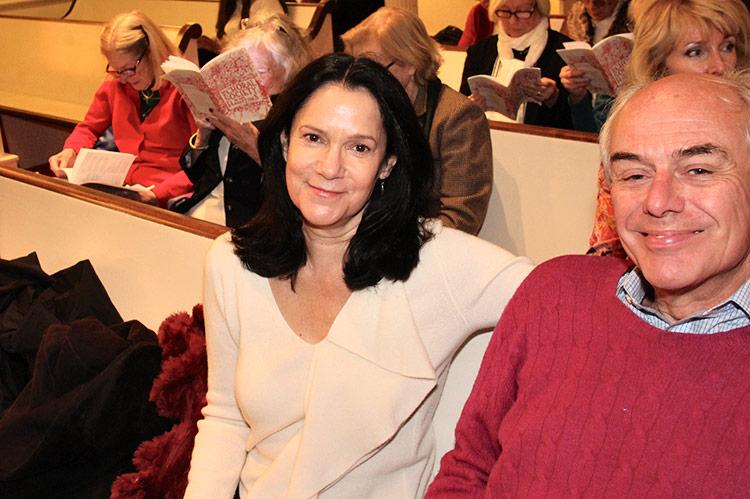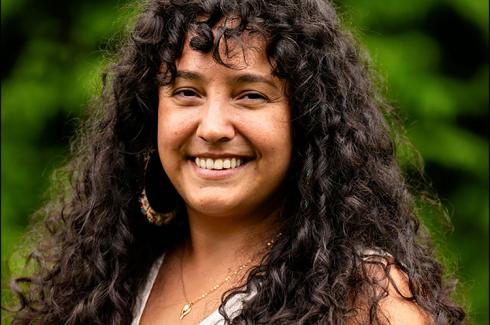Often when attending a Christmas choral concert an audience expects reoccurring standards: the Vivaldi Gloria, the biblical narratives of Bach’s Christmas Oratorio, a few nostalgic English carols, and in conclusion an “all stand” for Handel’s Hallelujah Chorus.
While I love this repertoire, I often find myself searching for something different or new. That is exactly what Mark Mangini and the Choral Society of the Hamptons offered in two performances on Sunday, Dec. 8, at the Bridgehampton Presbyterian Church.
“’Tis the Season: Offerings of Celebration and Renewal Old and New” included favorites such as Fauré’s “Cantique de Jean Racine” and Holst’s “Christmas Day,” but also, and to much surprise, the often neglected Christmas Oratorio of Camille Saint-Saëns and two contemporary works: “Ave Maris Stella” by Colleen McDowall and the world premiere of “Dancing: Variations” by David M. Brandenburg, a local writer and composer. If I was searching for something new, I certainly found it.
Opening with Fauré’s “Cantique,” the choir quickly found its sound. The men provided a warm yet present tone, allowing each section to enter with ease, a tribute to both the choir’s sensitivity and to Fauré. The sopranos led the swells of devotion (the text: O Savior, turn on us thy loving eye), opening to full symphonic sound. While the sound was outstanding, attention to the softer, contrasting dynamics were needed in the middle section, which calls for God to “pour on us the fire of your powerful mercy and dispel the sleep of a languishing soul.” Despite this, the choir ended each cadence with balanced sound and collective consonant and/or release — every choir master’s dream.
The performance was heightened by the pianist, Konstantin Soukhovetski, who led the orchestra, allowing expressive rubato while keeping the music true.
After the Fauré, the program turned to the two contemporary selections. Ms. McDowall’s “Ave Maris Stella” is both an anthem for international peace and a commemoration for the seafarers and navy of World War I. She makes this known by the subtitle, “Pro Pace,” and the inclusion of a quote from President Woodrow Wilson; “The freedom of the seas is the sine qua non of peace, equality, and cooperation.”
She creates the sensation of ocean waves throughout the piece, often displacing entrances to a secondary or off-beat cadence. A serene atmosphere is depicted through long intercepting tones as the choir and orchestra accompany a soaring soprano melody. The exact opposite is created within Psalm 106, with the orchestra in constant quick off-beat phrases and the choir in a declamatory homophony through several meter changes. The setting of Psalm 27, which the turbulent Psalm 106 lives within, offers a still accompaniment to a single voice delivering the text in recitative style.
Unfortunately, I attended the first of the two performances. Traditionally, the Choral Society considers the first a dress rehearsal. I have been told the 5:30 p.m. concert did not contain the flaws of the first performance, during which the choir and orchestra were hesitant on some entrances, causing an unbalanced sound and several false entrances. Although the serene shimmer of the “Ave” and urgent communicative nature of Psalm 106 had been diminished, the reflective nature of Psalm 106 remained due to the clarity of sound and hopeful potency of the text by the society’s own administrative director, the superb soprano soloist Hannah Faye Huizing.
The world premiere of Mr. Brandenburg’s “Dancing: Variations” was the most anticipated performance of the afternoon. Set to a poem by Kathryn Levy of Sag Harbor, the piece is a reflection on a reflection. As noted in the concert program, “The poem shifts from imagery to self-referential ideas: the painting is a picture of flowers; the poem is a picture of the painting. And the music is a picture of the poem.”
Focusing on the first half of the poem, Mr. Brandenburg repeats the text several times. With each iteration, he displays the knowledge and compositional agency he holds within several musical genres, setting the text in ever-changing harmonic languages and mixed meters within the context of classical fugues and waltzes, contemporary dissonances, and Sondheim-esque musical theater. In setting the text this way, Mr. Brandenburg represents the various ways a painting may be interpreted, reflecting on a central line of the poem: “We love to pretend so many things.”
Similar to Ms. McDowall’s “Ave Maris Stella,” many of Mr. Brandenburg’s compositional strengths were lost during the 3 p.m. performance; a lack of grounding from the lower male voices diminished the impact of the fluctuating harmonies. Additionally, reinforcing this performance as a dress rehearsal, there were hesitations. This was clear as the society’s revered music director, Mark Mangini, made two full stops and restarts midperformance.
The program then continued with the Christmas Oratorio of Saint-Saëns. This fit the Choral Society perfectly. The initial Gloria embodied the full-voiced symphonic choir so expertly shown in the opening Fauré, but this time adhering to Saint-Saëns’s more classical form: delivering precise double-dotted rhythms and purposeful fugal entrances. A particularly strong moment for the choir was just before the soloist’s buoyant Alleluia. Here the choir displayed both a stunning force of sound and a drastically contrasting whisper within the Psalm II text, “Wherefore do the heathen clamor? Why do the nations imagine vain and foolish things?” This was enhanced by a waltz-like Gloria.
The soloists each produced easy tones and expressive narratives, which carried the arc of the Saint-Saëns. Of particular notice was the tenor, Colin Fitzmaurice, whose even tone provided a perfect vehicle for the recitative sections and whose blossoming upper register highlighted the duet and quintet sections.
The 5:30 p.m. concert was reportedly performed without flaw and with a feeling of such communal joy that the audience as well as the singers and instrumentalists joined the choir in singing hymns with gusto at its conclusion and at a potluck reception and Chinese auction that followed and brought the evening to a highly appropriate and spirited inauguration of the Christmas season.
Anthony Madonna is a vocalist and interdisciplinary collaborative artist, educator, and administrator, currently serving as the fellow in arts education at Guild Hall.




